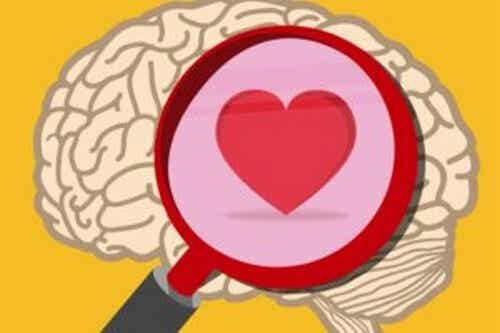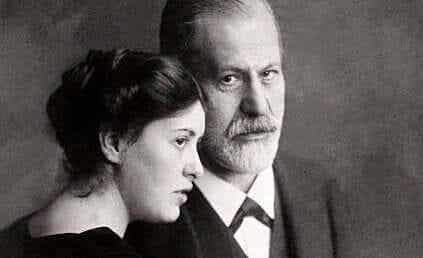
Last update: Augusts 15, 2020
In our daily life we are called to make hundreds of decisions, many automatically, while for others we need to reflect. Although emotions affect each of these decisions, sometimes intense feelings can cause us to adopt behaviors that are contrary to our values or our interests. To avoid this, you have to become an emotion expert. By educating children in emotional control from an early age, they will find themselves at an advantage.
Emotions give us the motivation to act, the impulse to carry out an action. And it is during childhood that we begin to notice its effects, even if there are few children, but also adults, who stop to think about it. Childhood is therefore a propitious phase to lay the foundations and provide the right tools to become experts on emotions.
In this way, emotions will not drive the child; on the contrary, it will be he, through an exercise of self-control, who will use the energy that flows from it to adopt attitudes and behaviors consistent with the system of values he is building.
How to turn children into emotion experts
First step
The first step is to know the primary emotions. This means that in addition to knowing what it is, you need to know its functions. The main emotions to know are anger, sadness, happiness, curiosity, sorrow, love, and in the case of slightly older children, shame.
Some, like anger, generate in us the desire to hit, insult or attack others. Others, such as happiness, help us to be more open, available and generous.
Second passage
The second step in this climb towards becoming an emotion expert is to distinguish the various emotions. Being able to recognize them in ourselves and in others. However, without the previous step, the next one proves impossible to accomplish.
It is not possible to recognize what one does not know. If we know the gestures, looks, and behaviors generated by primary emotions, we will be able to recognize them quickly. For this reason, it is essential that children learn to identify the emotions they feel by calling them by name. For example, we can help them become aware of their emotional state with phrases such as "you are so happy you can't sit still for a moment" or "you want to hit your brother because you are angry".
Third step
This step is to legitimize the emotions felt by the children. In other words, you have to indulge the emotions of the little ones and get involved whenever possible. That is to say, that before resorting to the usual phrases such as "don't cry, nothing bad happened" or "I don't understand how something like this can scare you", we should pronounce phrases like "it is normal for you to feel this way. "," I understand that it can be hard "," it happens to everyone to feel frustrated when despite the efforts you do not get what you want ".
To educate children in the knowledge of emotions, we must try to put ourselves in their shoes. Being empathetic means accepting their feelings, while providing alternatives to channel them beyond the tempting and impulsive behaviors they lead to adopt.
Fourth step
At this point the child will be ready to learn to regulate his emotions. These cannot be stopped, but it is still possible to manage the behaviors they trigger and the inner dialogue they initiate. To intervene on behaviors, it is necessary to make a distinction between emotion and behavior.
Emotion is what we feel, behavior is what we do. Feeling anger does not justify our hurting others. Children need to be taught that between emotions and behaviors there is conscience, so behind our behaviors there is always a margin of decision. It is precisely on this margin that we must work.
Still following the example of anger or rage, relaxation exercises are a great tool, as well as polite ways to correct others so that no recurrence of aggression.
Fifth step
Reflection is a mental activity that makes us human, and it is essential to put it into practice to become experts in emotions. Reflecting on the emotions we feel, but also on the sensations, thoughts, and actions that follow is the next step.
Helping children pause and reflect on what is happening to them is a good way to get them to know their emotions better and learn to manage them.
Sixth step
As we continue on our journey towards awareness of emotions, we find ourselves colliding with the fact that sometimes emotions are not adaptive. For example, if we get a scholarship but our friend can't, expressing our cheerfulness will not be adaptive.
What needs to be done is use empathy to steal other people's emotions and adapt our behavior to the situation. It is for this reason that children must be taught the most effective ways to manage their emotions, especially the unpleasant ones.
Seventh step
The last step is to develop a history of events. That is to say that you have to give a sense or an explanation to what happens. It's like telling a story. If a little girl has a bad dream and wakes up crying and screaming, you have to tell her that she had a nightmare and she felt fear, that's why she burst into tears. At this point it is essential that the child understands that her nightmare has no reason to turn into reality.
Taking these seven steps to turning children into emotion experts is not easy. You have to find the time, have a lot of empathy and above all patience. However, by teaching children how to manage their emotions, we guarantee them a better future. We provide them with the tools they need to avoid conflict and enjoy better emotional health in the future. After all, we educate them to become experts in the sector.

























